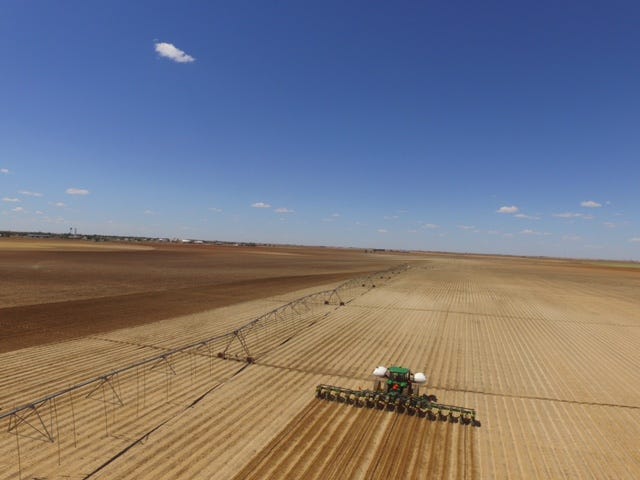
<p>Southwest cotton farmers are busy putting in the 2016 crop.</p>
As cotton planting in the High Plains and Oklahoma moves into full swing, fields further south are past squaring stage and producers are actively scouting and treating some insect pests.
Most cotton fields in southern and eastern Texas are faring well and recent rains have improved soil moisture indexes in portions of West Texas and the Panhandle in time for planting, says Dr. Gaylon Morgan, Texas A&M AgriLife Extension Service cotton specialist, in a recent crop report.
He expects Texas cotton acreage to be slightly lower than 2014, but nearly double South and East Texas planted acres in 2015.
“The 2016 crop has had its challenges with excessive rain, but nothing compared to the prolonged wet weather observed in 2015,” he says.
UPDATE
Morgan says this week cotton in the RGV is looking good. The cotton planting started early in February and stretched out longer than usual. Some of the earlier planted cotton is about 20 nodes now and mid-bloom. Aphids have been a bigger problem this year than in the past 4 or 5 years with many people making multiple applications to manage them. I did not hear of any major white fly problems yet.
"A lot of the early planted cotton in the Coastal Bend had to be replanted due to the heavy rain in March. However, across the board, the cotton looks good and soil moisture is still good. The Upper Gulf Coast has had a lot of rain this spring, which caused some replanting in some areas and others with thinner than normal stands. Planting dates have varied a lot in the Blacklands also. I saw numerous field Thursday in Williamson and Milam counties that were in the cotyledon stage, but with good stands.
"The far northern Blacklands still have quite a bit of cotton to plant and is running behind normal due to the wet spring. The planting of the irrigated cotton in the Northern Rolling Plains has started, while dryland cotton will need a rain to have planting moisture. The Southern Rolling Plains will likely begin planting next week.
I have not heard of much thrips pressure thus far, but I have heard some reports of fleahopper treatments starting in Coastal Bend and Upper Gulf Coast.
In Oklahoma, rainfall has been spotty, according to the latest Cotton Comments crop report from Extension cotton specialists at Altus.
"We are now entering our historical prime cotton planting window for irrigated acreage," says Randy Boman, research director and cotton Extension program leader. "Areas where rainfall was not as plentiful are still waiting for better moisture s in the upper profile."
Recent rain events in West Texas and the Rolling Plains improved the moisture index in time for planting, but Morgan said another timely rain in mid-to-late May would help establish good cotton stands.
West Texas acreage is estimated to top 4.5 million acres.
Danielle Sekula-Ortiz, AgriLife Extension integrated pest management agent in Weslaco, said cotton planted in the Lower Rio Grande Valley, where cotton typically is planted earliest, was up and squaring nicely in early May, with some older fields showing blooms.
Here are a few photos showing Southwest cotton progress. Thanks to farmers Barry Evans, Doug Wilde and Bill Lovelady; gin manager Dan Jackson; Extension specialists Gaylon Morgan and Randy Boman; and independent crop consultant Clyde Crumley for photos
About the Author(s)
You May Also Like






